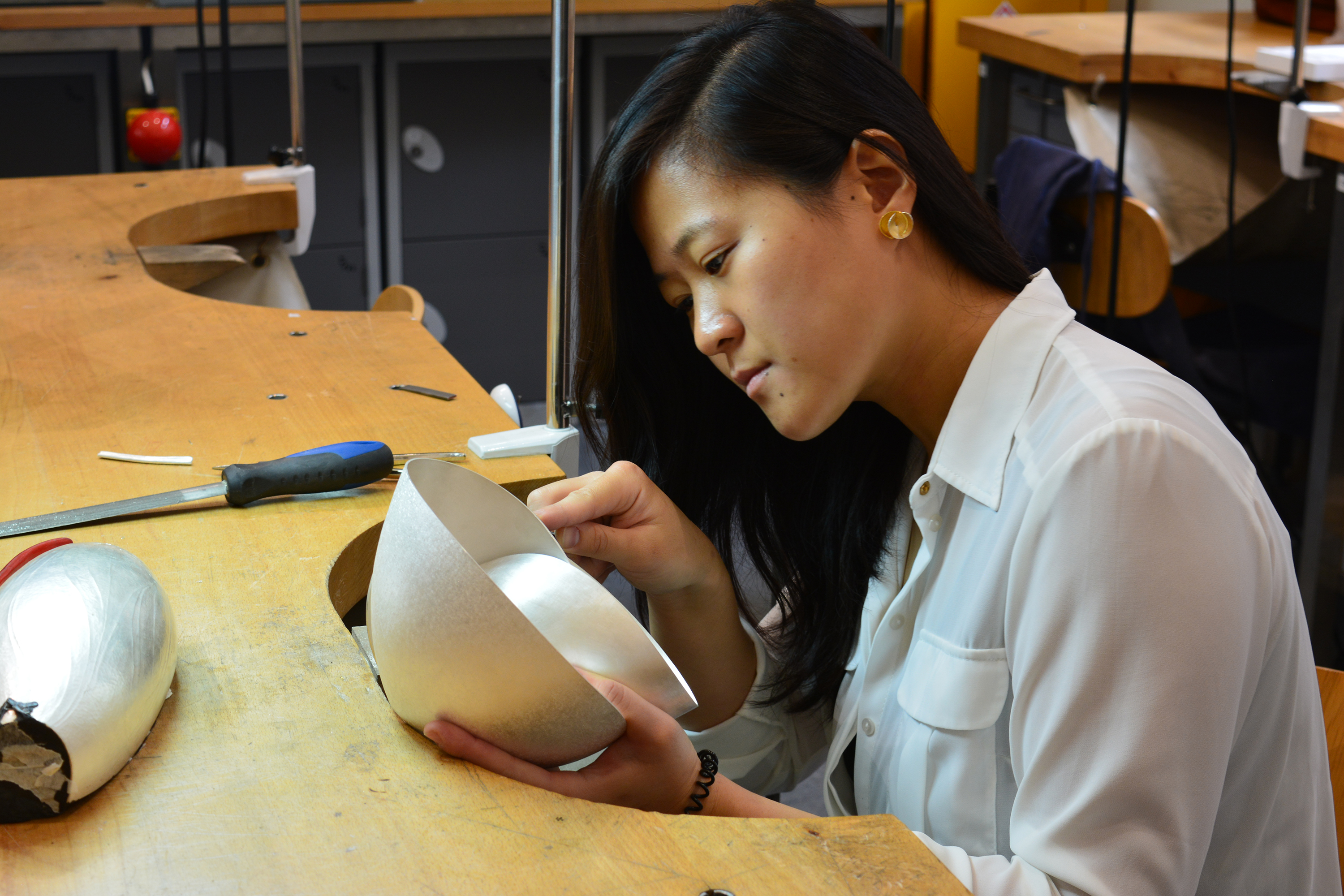In the final excerpt from our Luxury Insights Report into Art, AI and the Future of Creativity, silversmith and jeweller Jessica Jue shares her evolving perspective on AI as both a tool and a creative collaborator. Open to the potential of platforms like DALL·E and Midjourney, Jue reflects on how AI could streamline production processes and expand the boundaries of design - as long as it's balanced with personal vision and traditional craftsmanship.
How can AI support silversmithing and design?
I am completely open to using the myriad of possibilities of AI to support my business. I am excited by its potential to generate new and innovative design ideas and outcomes, especially around interpreting pictures into various forms, materials, finishes, which might help me explore an array of options beyond my imagination. AI can provide tools and solutions to reduce some of the repetitive and time consuming tasks within production processes, leaving me to focus on the more creative areas of my work. I see working with AI as another form of collaboration, some of the AI apps I am looking forward to using and exploring include DALL-E by OpenAI, Stability Studio and Midjourney.
Some of theuncertainties I have around AI had always been that designs could look too similar to each other, or that there could be a loss of personal touch and creativity. However, I believe like everything we as silversmiths already use, AI would simply be another tool within our toolbox. It should be used to improve efficiency and designs generated through these tools would simply be a stimulus, in which we could refine and elaborate on or just keep in the background as a source of inspiration. As long as one is mindful that there needs to be a balance between new technologies and preserving traditional craftsmanship, AI could enhance ones business rather than detract from it.
I look forward to seeing how AI develops and I anticipate that it could become one of the most widely used tools amongst silversmiths and craftsmen.
Does AI blur the boundary between art, design and artifice?
I believe in the years to come, especially within the initial stages of incorporating AI into our creative process, there are possibilities that the boundary between art, design and artifice will start to blur.
Whilst traditionally art and design are seen to be the realm of human expression, emotion and skill, the independent capability and ingenuity of AI will no doubt raise questions around the authenticity of the work and whether something is actually creative or merely a result of algorithms put together by the computer. I do have concerns over AI taking over in the collaborative process and being unique and original is important to me, as is having control of the creation and selection of ideas.
AI could be of great use to my practice as long as there is blend between technology my personal insights and experiences. By being mindful and conscious over when and how to use AI, I can ensure that the end result will still reflect my personal vision.
What defines real craftsmanship for you and your industry – now and can you take a future view on this
To me real craftsmanship within silversmithing is defined by a combination of skill, precision, creativity and a deep understanding for the material and techniques of the craft. Silversmithing hand-making skills include the ability to manipulate materials, construct and finish to the highest of standards with an exceptional attention to detail. These are often passed down through generations with years of training and diligent honing of the skills. Real craftsmanship is also about the ability to infuse creativity and an aesthetic into the work, making each piece distinctly unique.
The use of AI will become increasingly more apparent within the silversmithing industry. Digital tools will become more integrated in our craft and it will only be natural over time for many to adapt and effectively use these tools. This could enhance design or precision and explore more creative possibilities that embrace both traditional and modern approaches. The future of craftsmanship may be defined by the combination of digital and manual skills.



